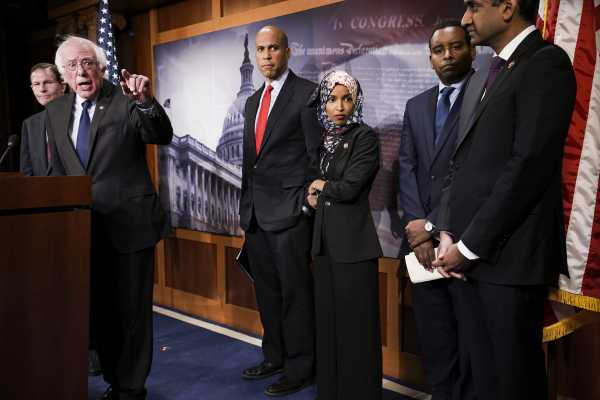
All of Congress’s ideas for bringing down prescription drug prices, explained
Congress has some big ideas to cut drug prices. Here’s how they work.
By
Dylan Scott@dylanlscott
Updated
Jan 14, 2019, 5:05pm EST
Share
Tweet
Share
Share
All of Congress’s ideas for bringing down prescription drug prices, explained
tweet
share
Americans have been saying for years that they’re frustrated with the price of medicine and it should be near the top of lawmakers’ to-do list. Now congressional Democrats are starting to put together an extensive menu of ideas for reducing prescription drug costs.
Democrats have made drug prices a top priority for their new House majority — and this is one of the rare policy areas where they might find some common ground with Republicans.
Join the Vox Video Lab
Go behind the scenes. Chat with creators. Support Vox video. Become a member of the Vox Video Lab today.
Sen. Bernie Sanders (I-VT) and Rep. Elijah Cummings (D-MD) came out last week with a slew of bills to lower prescription drug prices, pulling together some of the most popular ideas already out there. Sen. Chuck Grassley (R-IA), who heads the influential Senate Finance Committee, has signaled he also wants to pursue a few targeted bills this Congress, leading to new optimism that bipartisan compromise on the issue is within reach.
Democratic aides have made clear that while their conference is united on the necessity of action, they still need to figure out where the consensus on the actual policy is. Hearings are expected in the House in the coming year.
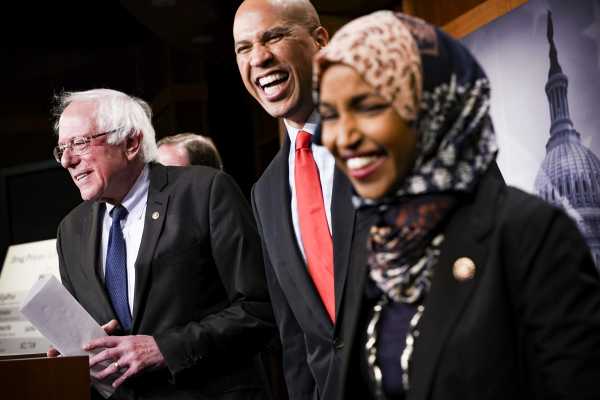
“How do you take this gargantuan menu of things and figure out how things fit together in a way that stem some of the abuses?” is how one senior House aide summarized the dilemma to me last fall.
The reality of drug prices is always more complicated than the rhetoric. List prices get all the attention, and they have gone up, but they don’t tell the full story. The real cost to patients is more opaque, buried in a tangled web of manufacturer rebates and insurance cost sharing. The current system, for its flaws, has also delivered remarkable medical breakthroughs in recent decades; then again, the matter of research and development is also a complex one.
Drug prices are a thorny problem. What we do know for sure is people want something done about drug costs. The current proposals on the table range from the realistic to the purely aspirational. In roughly such an order, they are:
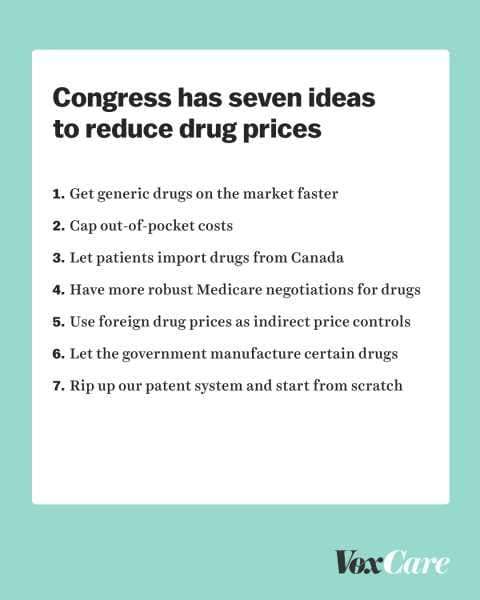
Let’s run through both types, starting with the humbler, but today more politically viable, possibilities.
Idea 1: help generic competitors get on the market as quickly as possible
In terms of what could actually pass Congress and get to President Trump’s desk during a divided government, the best starting point would be two bills supported by Grassley, the Iowa senator who just took over the Senate Finance Committee, to speed the development of generic drugs.
Grassley told reporters last week that he wanted to move a pair of bills that would, through different means, try to make sure that generic competitors to brand-name drugs are able to come on the market (and thereby start to bring down prices) as quickly as possible.
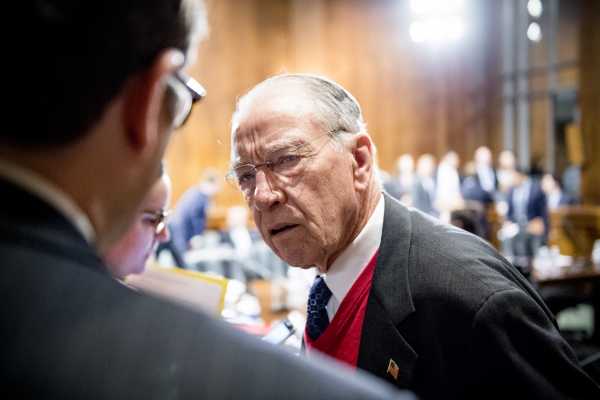
They are both co-sponsored by Sen. Amy Klobuchar (D-MN), a potential 2020 Democratic presidential contender, with Sen, Pat Leahy (D-VT) also attached to one. Those bills would, in brief:
There are also other targeted proposals to ramp up government-funded research on the effectiveness of drugs and to stem other kinds of patent abuses that fall under the same umbrella and which consumer advocates expect to be a part of the upcoming debate over drug costs.
These ideas aren’t new; industry groups have tried to keep them from getting anywhere on Capitol Hill for years. But Grassley has a powerful perch as finance chair and sounds like he is serious about trying to do something over the next two years.
One irony of the ongoing drug prices debate, says Rachel Sachs, an associate professor at Washington University in St. Louis, is that the drug industry opposition to more modest proposals like this, targeted to particular bad actors and actions, is driving Democrats to embrace more ambitious and potentially disruptive proposals.
“When the industry opposes even those bills designed to rein in bad actors — those engaging in collusive settlements or other anticompetitive practices — it is not surprising that Democrats would seek to introduce more extreme ideas,” she told me.
We’ll get to those in a moment. But first, there is another idea that enjoys support from both Democrats and Republicans.
Idea 2: let Americans import cheaper drugs from Canada
Drug importation was the other item on Grassley’s list, and it is also part of the Sanders-Cummings rollout. Grassley wants to pursue a bill that resembles prior proposals from the late Sen. John McCain (R-AZ).
For the time being, though, let’s look at the freshly introduced Democratic bill, co-authored by Sens. Cory Booker (D-NJ) and Bob Casey (D-PA).
Functionally, the proposal is pretty straightforward, though there are a lot of granular conditions for which foreign sellers would be allowed to export medications into the United States, safety protocols, and even criminal penalties for people who try to bring counterfeit products into the country. (Safety and the risk of counterfeit drugs is the big issue raised by the industry in opposition to importation.)
US wholesalers, pharmacies, and individuals would be allowed to import medications from Canada that were manufactured at sites inspected by the Food and Drug Administration. After a few years, importation from other countries would also be permitted, so long as the countries have comparable regulatory and safety standards to the United States.
Patients would be allowed to import drugs only from licensed foreign sellers, only if they have a valid prescription from a US doctor, and they could only order a supply that would last for 90 days or less. The Congressional Budget Office estimated a prior version of the Democratic importation bill would save the federal government nearly $7 billion over 10 years.
(The McCain proposal is a more limited version of the same idea, restricting importation to Canada and individual patients.)
Importation is a popular idea that is easy for the public to understand, though policy wonks don’t love it. There is a risk that the other countries would move to intervene if they feel their own prices rising in response to a US importation program.
Idea 3: cap patients’ out-of-pocket costs for drugs
There is also the matter of insurance benefits. Pharma argues, and with some justification, that the pain Americans feel on drug affordability is less about drug prices (as set by drug makers) and more about drug costs, what people are required to pay out of pocket under their insurance plan.
There are a few proposals to specifically target out-of-pocket costs for prescription drugs:
- As part of a broader drug prices bill introduced last year, Sen. Tina Smith (D-MN) and Sanders proposed introducing a $250-per-month cap on cost sharing for prescription drugs for Obamacare and group insurance plans.
- Sen. Elizabeth Warren (D-MA) introduced a standalone bill in 2017 to do the same thing.
- Another bill from Sen. Ron Wyden (D-OR) would place a hard cap on cost sharing for prescriptions drugs for Medicare beneficiaries, who are currently required to continue paying either copayments or coinsurance even after they nominally hit the program’s out-of-pocket cap.
Six in 10 people take a prescription, and one in four say they or a family member have declined to fill a prescription or skipped a dose because of the cost of their drugs. Those folks would surely welcome the immediate relief of lower cost sharing.
However, Democrats in particular believe more fundamental changes are needed to the prescription drug market.
Idea 4: let Medicare collectively negotiate drug prices
Medicare negotiations have become the signature policy idea, particularly out on the campaign trail, for Democrats who say they want to lower drug prices. It tends to poll well; President Donald Trump even flirted with the concept during his 2016 campaign.
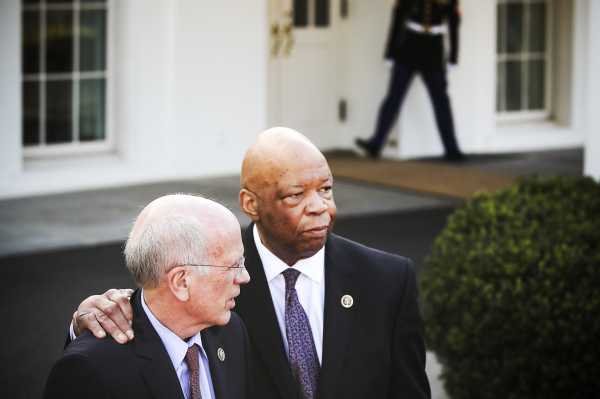
A new bill, co-sponsored by Rep. Peter Welch (D-VT), sets out parameters for negotiations:
- The bill would repeal an existing prohibition on the health and human services secretary negotiating prices for drugs covered by Medicare Part D.
- The secretary would prioritize certain kinds of drugs for negotiation: high-cost drugs, drugs with recent price hikes, and drugs without any notable competition.
- The federal government would account for a given drug’s clinical effectiveness, as well as cost-effectiveness, and its impact on the Medicare budget when negotiating new prices.
- The health secretary would create a formulary for Medicare drug coverage. Part D would be required to cover at least two drugs in every class and category.
- The legislation creates a so-called fallback price if the negotiations fail. Those fallback prices would be based either on what other federal programs like Medicaid pay for drugs or on what certain foreign countries pay, whichever is lowest.
The tricky part of Medicare negotiations has always been the formulary (which gives preference to certain drugs and/or places restrictions on when a drug is covered). The Congressional Budget Office has previously said that without the formulary, Medicare negotiations wouldn’t necessarily save a meaningful amount of money. That makes sense: Negotiators need the leverage of access restrictions to extract deeper savings from drugmakers.
However, such restrictions also make the government vulnerable to attacks that it is denying patients access to drugs they want or need; pharma argues that private Medicare Part D plans already negotiate discounts for drugs and patient access could be hindered under a model like this one. The new bill does notably allow for patients to make an appeal to Medicare to cover drugs not included in the formulary.
There is a peripherally related provision in the bill that could also lower costs. Low-income seniors who are covered by both Medicare and Medicaid currently receive drugs through Medicare. The Sanders-Cummings bill would require drug manufacturers to pay Medicaid rebates for those patients, which CBO has estimated would save $154 billion over 10 years.
Idea 5: use foreign drug prices to reduce American prices
The last piece of the Sanders-Cummings package has some similarities to a recently minted Trump administration initiative. You could think of it as an America First plan.
The bill is actually pretty simple in its mechanics: If the US price for a medication is higher than in other developed countries, the drugmaker’s monopoly would be ended and generic competitors could enter the market to sell alternative versions of the drug at a lower price.
This is how it would work:
- Every year, the federal health department would identify “excessively priced” drugs: medications priced higher in the US than the average price in Canada, the United Kingdom, Germany, France, and Japan.
- The health secretary could also label a drug as “excessively priced” based on other criteria, including the size of the patient population, the value of the drug to patients, and the costs of developing the drug (among other metrics).
- If a drug is deemed “excessively priced,” its manufacturer would lose the patent protections that prevent competitors from developing generic versions of the drug.
- New generic competitors could then start selling their own iterations of the drug, though they would be required to pay a “reasonable royalty” to the drug’s original manufacturer.
Some experts, even those who generally favor aggressive actions to bring down drug prices, worried that an earlier version of the plan, introduced last month by Sanders and Rep. Ro Khanna (D-CA), had such broad criteria for labeling drugs as “excessively priced” that the risks to medical innovation started to outweigh the benefits of lower prices.
I spoke with staffers who worked on the bill about this issue, and they told me their theory of the case: Drug companies will have the information they need — what they charge in the United States, what they charge elsewhere — to lower their prices enough to avoid having their patents invalidated. Democratic aides believe that most drugmakers will do what they must to maintain a monopoly in the United States.
Idea 6: let the government manufacture drugs
Elizabeth Warren and Rep. Jan Schakowsky (D-IL) want the federal government to start manufacturing prescription drugs when the market fails and prices for certain medications become unaffordable.
In their bill, under limited circumstances, the federal government would produce a more affordable generic version of certain drugs. These are the scenarios where the feds could start manufacturing their own medications:
- If no company is producing a generic version of the drug
- If only one or two companies are producing a drug and there is either a price hike or a drug shortage
- If only one or two companies are producing a drug, the price makes it difficult for some patients to afford, and the World Health Organization classifies it as an “essential medicine”
The bill allows the federal government to either produce the drugs itself or contract an outside company to do it. It would set “fair” prices to cover the costs of making the drugs. The bill also directs the federal government to start producing insulin, which helps treat diabetes (which tens of millions of Americans have) and has seen prices triple or so over the past decade.
Wonks on the right and left found this to be an intriguing idea; it is similar to a new nonprofit started by hospitals and philanthropic groups to do the same thing. “This proposal could be a helpful intervention for those generic drugs that have recently seen price spikes or are in shortage,” Sachs told me last month.
Idea 7: end pharmaceutical monopolies and give out “prizes” instead
This is the most audacious idea on the list, and when evaluating its political prospects, remember that Sanders has stood alone in the Senate in supporting it. The 2017 version of his bill attracted no co-sponsors. (An updated version is expected in the new Congress.)
But if we’re putting everything on the table, this proposal would effectively end the drug market as it exists today — in which drugmakers receive a decade-long monopoly on new treatments before any generic competitors can come on the market — and replace it with something new.
Under the “prize” model, developers of new drugs would instead receive a payment from the government and then other companies would be allowed to manufacture the treatment (within FDA safety and regulatory rules, of course.) The Sanders bill sets aside $100 billion every year to pay for the prizes, with specific pools of funding reserved for global neglected diseases, diseases affecting smaller populations, and certain infectious diseases.
A board of government officials and presidential appointees would oversee the prize fund. Prizes for specific drugs would be based on the number of patients who could benefit from a new treatment, how much the new drug improves on existing treatments, and other value considerations.
A “prize” system is a pipe dream for the near future, though Sanders has previously indicated such a program could start small by focusing on conditions with unique needs, like HIV/AIDS. Its biggest challenge is probably disruption: drug companies have made investments on the assumption that they would enjoy long monopolies on new drugs. The fundamental premise of the market would change under a “prize” plan — for the better, in the eyes of its supporters, but pharma is going to argue on the other side that innovation is at risk in this new market.
Sanders believes his prize fund would be generous enough to keep R&D thriving. Also potentially in the idea’s favor are libertarian scholars who also support giving out prizes instead of patents, creating an odd-duck alliance of democratic socialists and free market absolutists. It’s an interesting idea, at the very least.
In the nearer term, the proposals at the top of this list are much more realistic. But as some experts wisely noted, the intransigence in Congress and the persistent drag of drug costs on so many Americans’ wallets will keep the pressure on lawmakers to propose bigger and bolder solutions to the problem.
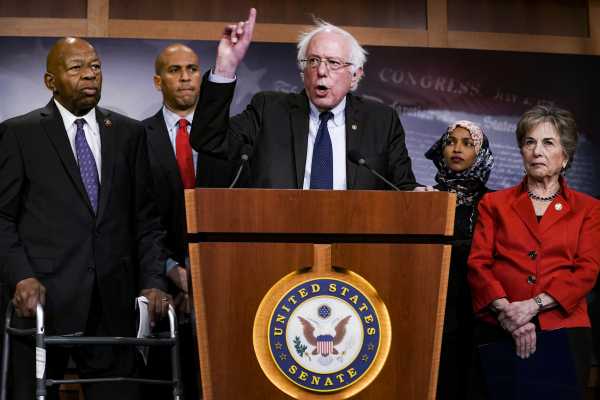
Sourse: vox.com






